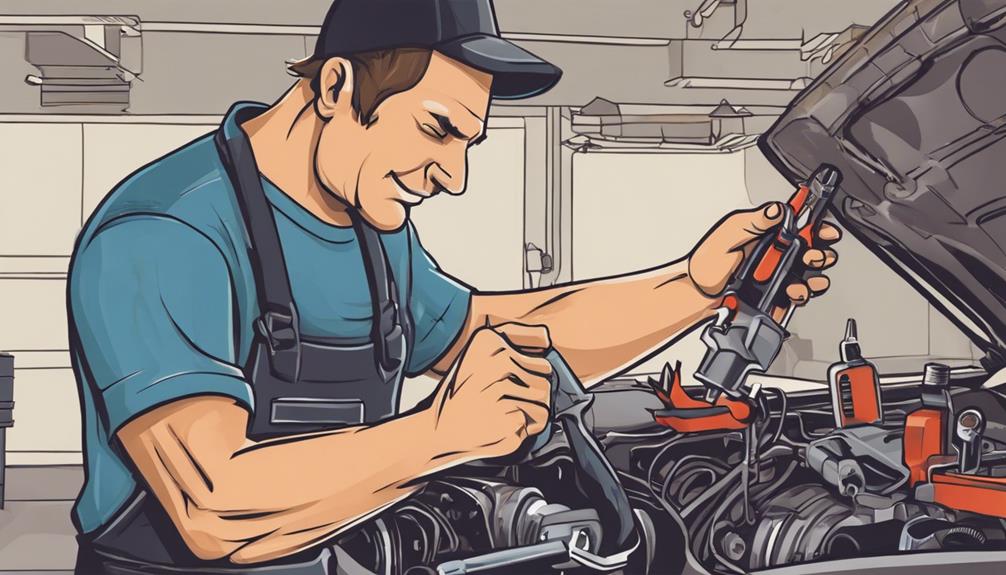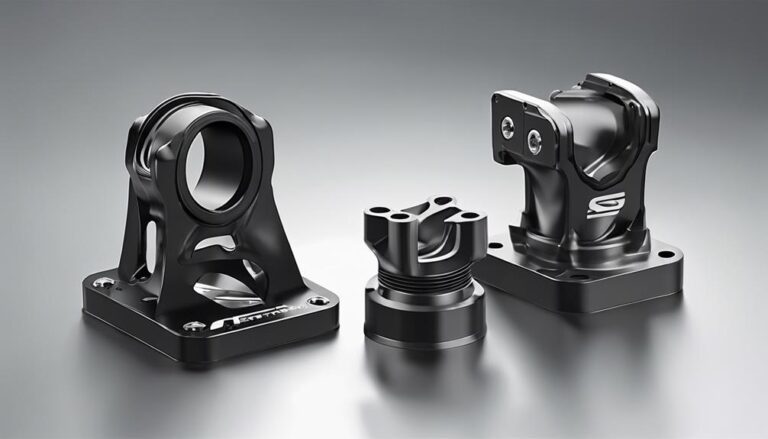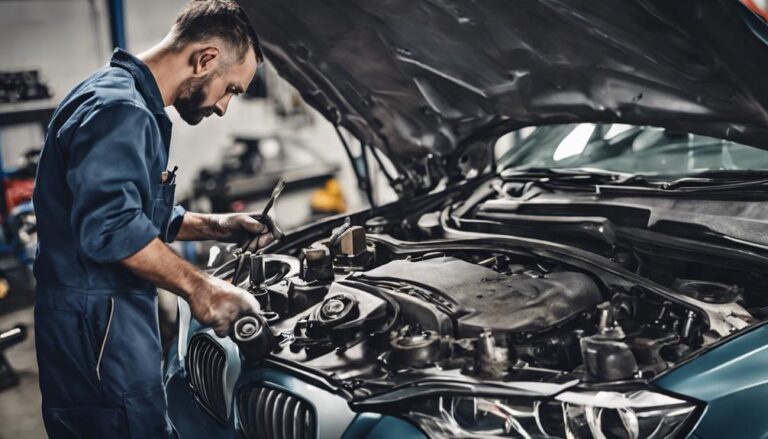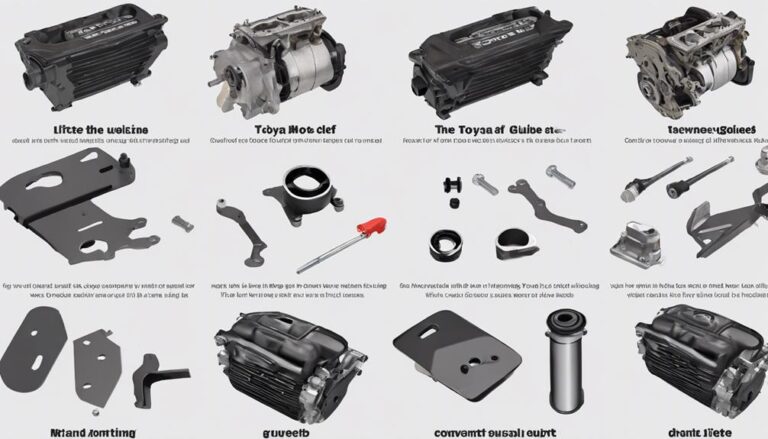Expert Tips for Motor Mount Replacement
When tackling the task of swapping motor mounts, accuracy is crucial for proper performance. Feeling flustered by defective mounts? Fear not, for expert tips await to ease your troubles.
Let's unravel the mystery behind this essential component of your vehicle's smooth operation and guarantee a hassle-free replacement process. Stay tuned for insightful guidance on selecting the right mounts, essential tools, and a detailed step-by-step guide to conquer this automotive challenge with confidence.
Key Takeaways
- Regular maintenance is crucial for optimal motor mount performance.
- Address signs of failure promptly to prevent further damage.
- Verify compatibility and quality when choosing replacement mounts.
- Safety and precision are essential for a successful DIY installation process.
Importance of Motor Mounts
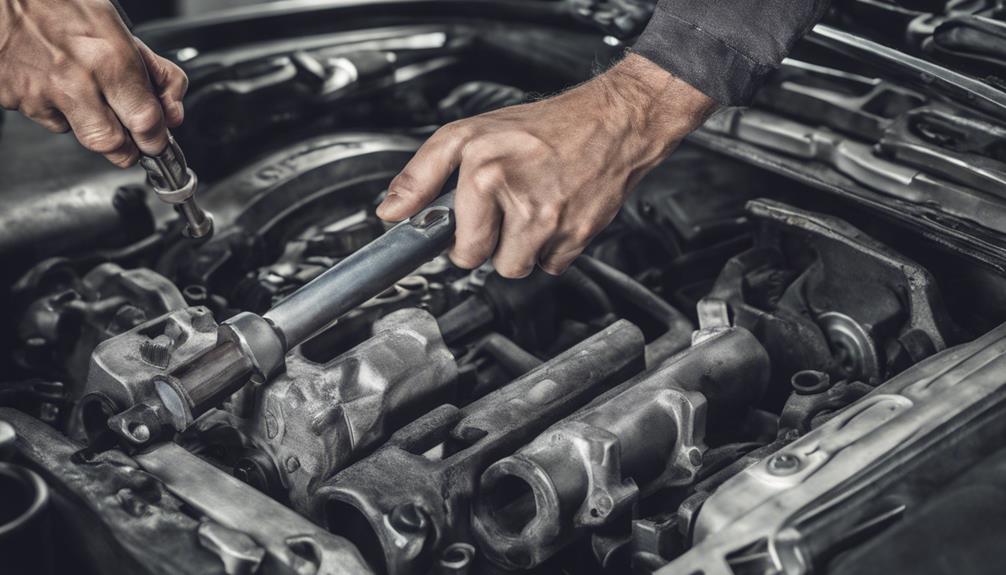
Understanding the important role that motor mounts play in supporting the engine and reducing vibrations is essential for maintaining a smooth and stable driving experience.
Motor mounts are vital components that secure the engine to the vehicle's chassis, preventing excessive movement and minimizing vibrations. These mounts act as a buffer, absorbing the engine's vibrations and making sure that they aren't transferred to the rest of the vehicle, thus enhancing the overall driving comfort.
To guarantee the best performance of motor mounts, regular maintenance is key. Inspecting the mounts for any signs of wear and tear, such as cracks or excessive movement, is important. It's recommended to replace motor mounts at the first sign of damage to prevent further issues that could affect the engine's stability and overall driving experience.
Proper maintenance of motor mounts won't only prolong their lifespan but also contribute to a quieter and smoother ride for you and your vehicle.
Signs of Failing Motor Mounts
Inspecting your vehicle's motor mounts regularly can help you identify signs of failure before they escalate and impact your driving experience. By paying attention to common symptoms, you can troubleshoot issues promptly.
One noticeable sign of failing motor mounts is excessive engine movement. When accelerating or decelerating, if you observe the engine shifting or rocking more than usual, it could indicate a problem with the mounts.
Unusual noises, such as clunking or banging sounds when shifting gears or driving over bumps, are also red flags. Vibrations felt throughout the vehicle, especially while idling, can point towards worn-out mounts.
Additionally, visible damage like cracks or tears in the rubber of the mounts is a clear indication that replacement is needed. When troubleshooting, inspect the mounts for any of these signs and address them promptly to prevent further damage to your vehicle.
Choosing the Right Replacement

To guarantee peak performance and longevity of your vehicle, selecting the appropriate motor mount replacement is essential. When choosing a replacement motor mount, two critical factors to consider are compatibility and quality assurance. Ensuring that the new motor mount is compatible with your vehicle's make, model, and engine specifications is vital to prevent any fitment issues or performance issues down the line. Additionally, quality assurance is crucial to guarantee that the replacement mount is durable and reliable for long-term use.
The table below outlines key considerations for choosing the right replacement motor mount:
| Consideration | Description |
|---|---|
| Compatibility Check | Verify compatibility with your vehicle's make, model, and engine specifications. |
| Quality Assurance | Look for high-quality materials and construction for durability and reliability. |
| Warranty | Check for warranty coverage to ensure protection against defects or premature failures. |
| Price | Consider the cost in relation to the quality and features offered by the replacement. |
Tools Needed for Replacement
For this task, you'll need a set of basic hand tools and possibly a torque wrench for precise installation of the motor mount replacement. The essential tools include a socket set, wrenches, pliers, screwdrivers, a jack, and jack stands for safely elevating the vehicle. It's critical to have the correct tools to guarantee a smooth and efficient replacement process.
When working on your motor mount replacement, remember to follow safety precautions. Always wear safety goggles to protect your eyes from debris and gloves to shield your hands. Additionally, make sure the vehicle is on a flat surface and securely supported by jack stands before beginning any work. Safety should always be a top priority when handling any automotive repairs.
Step-by-Step Replacement Guide
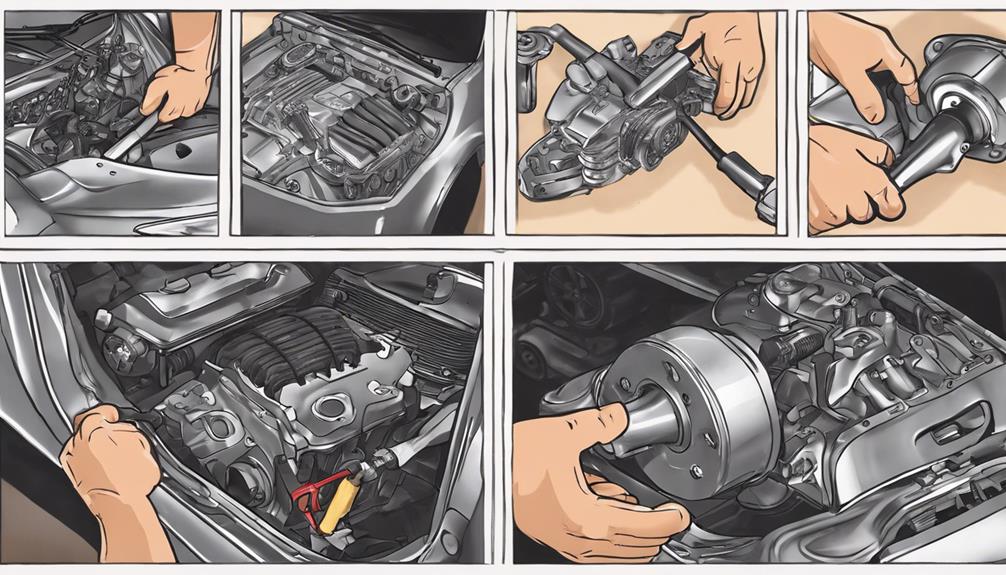
To start the motor mount replacement process, position the jack under the vehicle to lift and support the engine safely. Once the engine is secure, follow these DIY installation tips for a successful replacement:
| Step | Instructions | Common Mistakes to Avoid |
|---|---|---|
| 1. Prepare the Vehicle | Park on a flat surface, engage the parking brake, and chock the wheels. | Neglecting safety precautions. |
| 2. Locate the Motor Mounts | Consult your vehicle manual to identify the motor mounts needing replacement. | Mistaking other engine components for mounts. |
| 3. Remove Old Mounts | Support the engine with the jack, remove bolts securing the mounts, and take out the old mounts. | Not properly supporting the engine during removal. |
Following these steps and tips will ensure a smooth motor mount replacement process. Avoiding common mistakes such as neglecting safety precautions and mistaking other engine components for mounts is essential for a successful DIY installation. Remember to always prioritize safety and precision throughout the replacement procedure.
Frequently Asked Questions
Can Motor Mounts Be Repaired Instead of Replaced?
Yes, motor mounts can sometimes be repaired instead of replaced. However, it's essential to regularly inspect them at recommended intervals to catch issues early. Consult a professional mechanic for a thorough evaluation.
How Often Should Motor Mounts Be Inspected for Wear and Tear?
Inspect your motor mounts every 6 months or 12,000 miles. Check for visible cracks, excessive movement, or sagging. Replace if any signs of wear are present to prevent engine damage and guarantee a smooth driving experience.
Are There Any Aftermarket Motor Mount Options That Offer Better Performance Than OEM Mounts?
When considering aftermarket options for motor mounts, explore performance upgrades beyond OEM. Upgraded mounts can enhance stability and reduce engine movement, offering improved driving experience. Research reputable brands and seek expert advice for best results.
Can DIY Enthusiasts With Limited Experience Safely Replace Motor Mounts, or Is It Best Left to Professionals?
You can replace motor mounts yourself with caution. DIY safety is pivotal to prevent injury or damage. If uncertain, hiring a professional guarantees expertise and minimizes risk. Weigh the cost against safety and peace of mind.
What Are the Potential Long-Term Effects of Driving With Worn-Out Motor Mounts?
Driving with worn-out motor mounts can lead to increased vibrations, compromising engine stability. These effects could escalate, causing damage to surrounding components and impacting overall vehicle performance. It's important to address this issue promptly.
Conclusion
To sum up, replacing motor mounts is essential for maintaining the stability and performance of your vehicle. By identifying signs of failure and selecting the appropriate replacement, you can guarantee smooth operation and prevent costly damage.
Remember to use the necessary tools and follow the step-by-step guide for a successful replacement. Trust in your skills, follow the process diligently, and enjoy a well-maintained vehicle for years to come.

